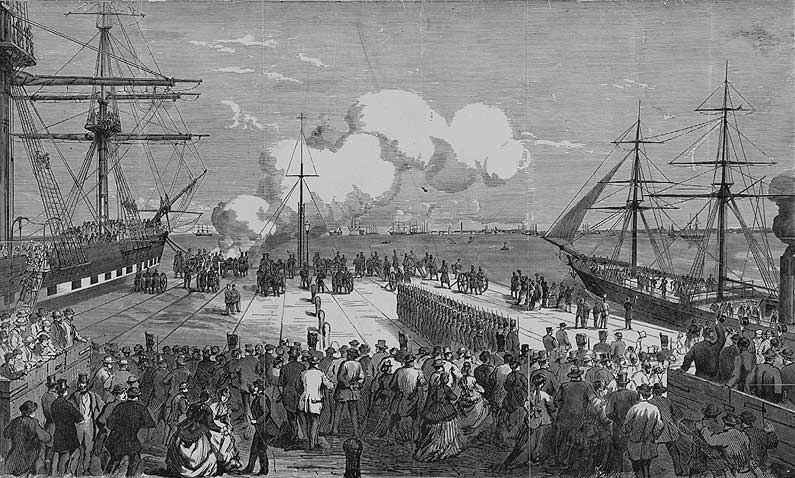 'Departure of the last of the British troops from Victoria', 1870
'Departure of the last of the British troops from Victoria', 1870
TLF ID R3204
This is a wood engraving by Samuel Calvert (1828-1913), measuring 21.5 cm x 35.5 cm and showing the last British troops to depart from Victoria in 1870. In the foreground a crowd of men and women watch soldiers lined up on a Melbourne wharf. There are ships on either side of the wharf, a sailing ship to the left and a steam-powered ship to the right, with many more ships in the bay. A salute is being fired from 12 cannons lined up at the end of the wharf, and smoke billows from the left.
